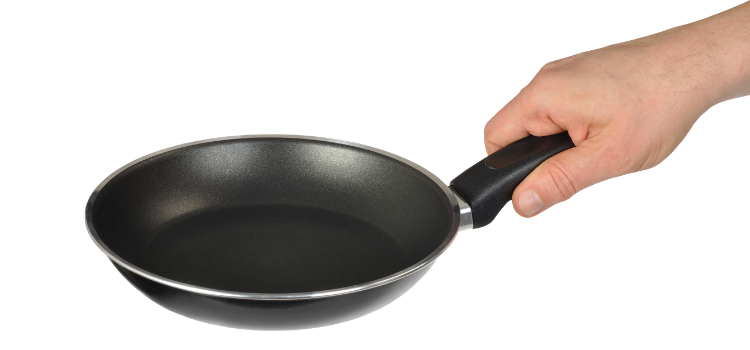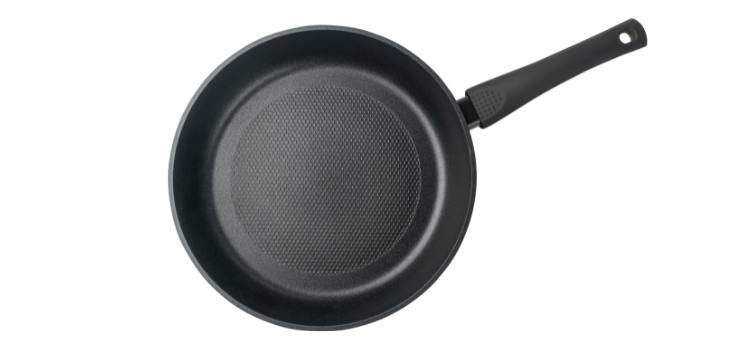As an Amazon Associate, I earn from qualifying purchases

Circulon cookware stands out in the culinary world for its advanced non-stick technology and robust construction. Lauded for their ease of use and cleaning, these pans are a staple in many kitchens.
Their popularity stems from their ability to distribute heat evenly, reducing cooking times and enhancing the flavor of dishes. Whether you are sautéing vegetables or searing meats, Circulon pans provide a reliable cooking experience.
Materials Used in Circulon Pans
Composition of Circulon Pans and Their Durability
Circulon pans are crafted from high-quality materials designed to withstand the rigors of everyday cooking. Typically made from hard-anodized aluminum, these pans boast superior heat conduction and retention. This construction not only makes them durable but also ensures even heat distribution across the cooking surface, a crucial feature for achieving consistent cooking results.
Overview of Rubber Handles and Their Purpose
The rubber handles on Circulon pans are designed with user comfort and safety in mind. They provide a secure grip, reducing the risk of accidental slips and burns. These handles are ergonomically crafted to remain cool to the touch, even when the pan is hot, adding an extra layer of safety during stovetop cooking.
Heat Resistance of Rubber Handles
Temperature Limits for Rubber Handles
While Circulon pans themselves can handle high temperatures, the rubber handles have specific heat limits. Typically, these handles are safe in ovens up to a certain temperature, often around 350°F to 400°F (175°C to 204°C). Exceeding this temperature can cause the rubber to degrade, compromising the handle’s safety and functionality.
How Rubber Handles Affect Oven Use
The presence of rubber handles means that extra care must be taken when considering oven use. These handles, while practical on the stovetop, can limit the pan’s oven compatibility. Understanding these limitations is crucial for ensuring the longevity of the pan and for maintaining safety in the kitchen.
Safety and Temperature Limits for Oven Use

Recommended Maximum Oven Temperatures for Circulon Pans
When using Circulon pans with rubber handles in the oven, it’s vital to adhere to the manufacturer’s recommended temperature limits. Typically, these pans can withstand temperatures up to 400°F (204°C). Going beyond this threshold could damage the rubber handles, leading to safety hazards and potential pan replacement costs.
Potential Risks and How to Mitigate Them
Ignoring the temperature limits can result in the handles melting or emitting unpleasant odors. To mitigate these risks, always check the specific model’s guidelines provided by Circulon. If higher oven temperatures are needed for a recipe, consider transferring the dish to a different oven-safe pan without rubber handles.
Practical Tips for Using Circulon Pans in the Oven
Preheating Guidelines to Avoid Handle Damage
When preheating the oven, ensure it does not exceed the safe temperature limit for the rubber handles. Avoid placing the pans too close to the heating element, as concentrated heat can compromise the handles more quickly. This precaution helps maintain the integrity of the rubber and prolongs the lifespan of your cookware.
Safe Handling Techniques During and After Baking
When removing Circulon pans from the oven, use oven mitts or kitchen towels to protect your hands. Even if the handles are designed to stay cool, they may warm up slightly in the oven. Allow the pan to cool on a heat-resistant surface before cleaning or storing it, preventing any damage to kitchen surfaces or the cookware.
Conclusion
Circulon pans with rubber handles can be safely used in the oven, provided the temperature guidelines are followed. Their innovative design and durable construction make them a versatile choice for both stovetop and oven cooking, with a few precautions. By adhering to recommended temperature limits and employing safe handling practices, you can enjoy the benefits of Circulon cookware without compromising its quality or your safety.
In summary, understanding the limitations and proper use of Circulon pans with rubber handles ensures both safety and optimal cooking performance. Keeping these tips in mind will not only protect your investment in quality cookware but will also enhance your culinary adventures. Whether you’re searing, sautéing, or baking, Circulon pans offer a reliable and efficient option for home cooks and chefs alike.
FAQ
Are Circulon pan handles oven safe?
Circulon pan handles are typically oven safe up to 350°F to 400°F (175°C to 204°C). It’s important to verify the specific model’s guidelines as exceeding the recommended temperature can damage the handles, compromising safety and functionality during oven use.
Can I put a pan with a rubber handle in the oven?
Yes, you can put a pan with a rubber handle in the oven, but ensure the temperature does not exceed the handle’s heat resistance, usually around 350°F to 400°F (175°C to 204°C). Always check the manufacturer’s instructions to prevent handle melting or damage.
Does a rubber pan go in the oven?
Rubber pans, or pans with rubber handles, can go in the oven if the temperature is kept within the manufacturer’s specified limits, typically below 400°F (204°C). Exceeding these limits can lead to melting or damage, making it crucial to follow usage guidelines.
Are pans with silicone handles oven safe?
Pans with silicone handles are generally oven safe up to higher temperatures, often around 400°F to 450°F (204°C to 232°C). Silicone’s heat resistance makes it suitable for oven use, but always confirm the pan’s specifications to ensure safe and effective performance.
As an Amazon Associate, I earn from qualifying purchases